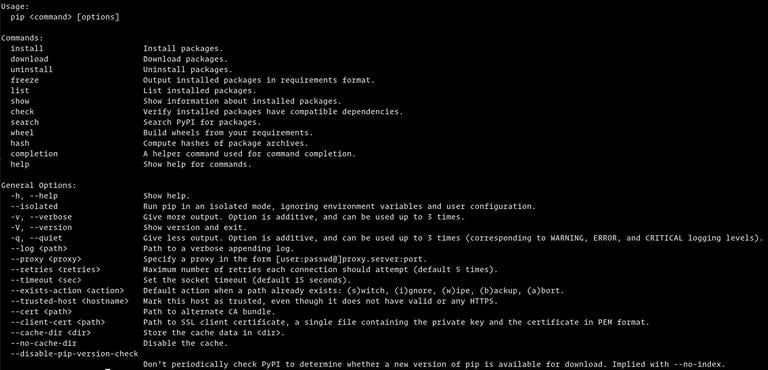
You would need to type sudo pip3 install ModuleName. On OS X and Linux, you’ll have to run pip3 with the sudo prefix to grant administrative privileges to install the module. For example, on Windows you would enter pip install ModuleName, where ModuleName is the name of the module. Install a specific version of a package (often done for compatibility reasons): pip3 install smpl=0.0.4.The pip tool is meant to be run from the command line: You pass it the command install followed by the name of the module you want to install. You can search for packages online in the PyPI package database at : pip3 install smplĪbove, we installed the smpl graphing package. To install a package, you’ll need to know the name of the package. To see what Pip Packages are already installed on your system: pip3 list Installing Python Packages with Pip You can list out all of the available functions in Pip from the terminal: pip3 -help Listing Installed Pip Packages

If it is not, you can install it by running the following in your terminal: sudo apt update

If it is installed, you’ll see something like: pip 20.0.2 from /usr/lib/python3/dist-packages/pip (python 3.8) Installing Pip/Pip3 To check if pip is installed, you can check the version installed on your Ubuntu system by running the following in the terminal: pip3 -version PyPI contains a collection of other users’ code for performing a multitude of tasks, from drawing graphs to artificial intelligence. The default repository used by Pip is the Python Package Index (PyPI) ( ). Python is useful on its own, but it’s even more useful when you can start leveraging other people’s pre-written code. It’s currently at version 3 – hence, Pip3. This tutorial will teach you how to install pip3, the package manager for Python, on Ubuntu Linux.


 0 kommentar(er)
0 kommentar(er)
